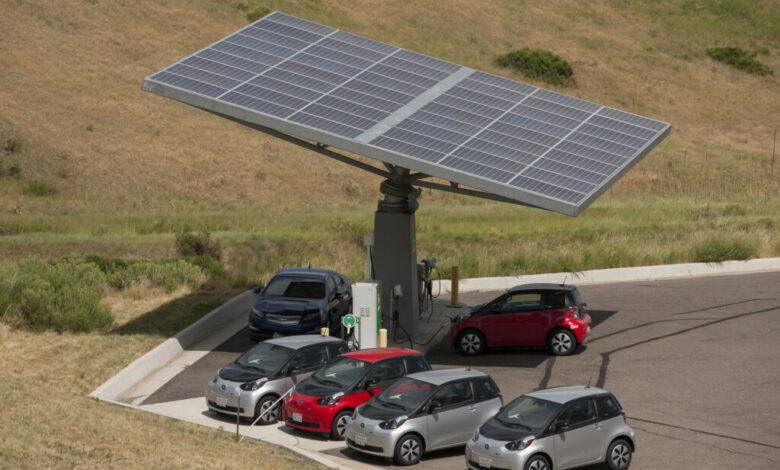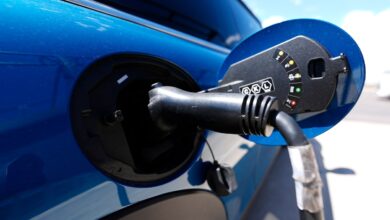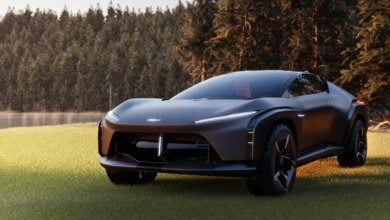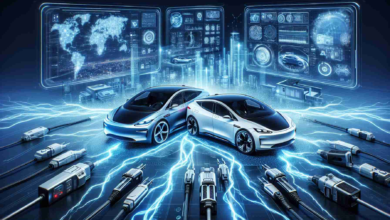Climate protection: Electric vehicles here and overseas


In January through March this year, Edmonds, Lynnwood and Mountlake Terrace residents bought a little over 200 new electric vehicles. EVs were 19% of the new cars and trucks bought this first quarter of 2024.
The EVs were Teslas, Rivians, Volkswagens, Hyundais, Kias, Cadillacs, Fords, Chevrolets, Volvos, Audis, BMWs, Fiskers, Lexuses, Mercedes Benzes, Toyotas, Minis, Nissans, Subarus and one Genesis GV60.
Teslas were the most popular. The most popular Teslas were the Model Y (60 cars), and Model 3 (19 cars). Rivian and Volkswagen came in next with 13 Rivian R1s’s and 10 Volkswagon ID.4s. (All data provided by the Washington State Department of Licensing.)
In Edmonds (where “natural” gas usage reporting is available), “natural” gas burning continued its recent fall. From March 2023 to February 2024, Edmonds residents burned 1.1 billion cubic feet of “natural” gas, down 21% from the 1.4 billion cubic feet burned the 12 months before.
I’m putting “natural” in quotes because there is nothing particularly natural about “natural” gas. “Natural” gas is refined from gaseous fossil fuels to remove some impurities. “Natural” gas is about as natural as gasoline.
The “natural” gas that gets into homes is mostly methane (a molecule made up of a carbon atom and four hydrogens). How much of the gas is methane is different in different places. In some places, “natural” gas is two-thirds methane. In other places, gas utilities do more refining and deliver 97% methane. The non-methane gases in “natural” gas include ethane, propane, butane and small amounts of a bunch of other chemicals.
The word “natural” was added to these gas mixtures to make them more appealing to customers. The thinking is that it must be good because someone called it “natural.”
In any case, with quotation marks or without, “natural” gas burning in Edmonds continues falling. (I wish I had data on Lynnwood and Mountlake Terrace.)
After my last report, a friend asked me to account for temperatures. The drop in “natural” gas burning might just be that we had a warm winter. I have not yet had time to get to that. Maybe in my next update in August.
International electric vehicle adoption
I have heard concerns about other countries and the transition away from gasoline. The leader in this transition is Norway, with over 80% of their new-vehicle sales being electric.
China is ahead of the U.S. In China, about 35% of new car purchases are EV’s.
In the European Union, 12% of new vehicles are electric. That’s better than the United States overall (7%), but not as good as western Washington.
Developing countries do not yet have much in the way of electric vehicles. That is because car buying in developing countries is a lot like buying used cars in the United States.After cars have been bought and sold a few times in countries like Japan, Germany, and the U.S., they are sometimes exported to developing countries.
For example, about 90% of the cars on the road in Ghana, Kenya, and Nigeria are imported used cars that were originally purchased new in places like Japan and Europe. In Pakistan, about half of cars are imported from other countries, and 90% of those imports are used cars. Guatemala gets its cars by importing, and most cars imported into Guatemala are used.
Anyone buying used cars in the U.S. or in a developing country are stuck with whatever cars new-car buyers bought years ago. That’s why the purchases of new cars are so important. A purchase of a new gasoline-powered car puts a gasoline burner on the road for the next 30 years or more, sometimes ending up in Africa or South America.
Our clean tap water
Taking a shower has changed for me recently. This month, I learned that there are PFAS – forever chemicals – in the rain. A city engineer explained that PFAS are getting everywhere. I bet that’s true. PFAS are falling out of the sky on us.
When the PFAS-polluted rain falls on the ground, it gets sucked up by plants. Some of those plants get eaten by pigs and chickens. When we eat salads, chicken, and pork, we eat PFAS. PFAS rain falls on organic farms as well as non-organic farms. Vegetarians, vegans, fast food customers, and paleo dieters; we all eat PFAS.
In many places in Washington state, the aquifers that supply water are contaminated with PFAS. That means that PFAS flow out of kitchen taps. PFAS leach from plastic water bottles. PFAS are getting everywhere.
According to the Federal Centers for Disease Control, PFAS poisoning is associated with high cholesterol, liver damage, lowered birth weight, worsened vaccine effectiveness, hypertension and preeclampsia during pregnancy, kidney cancer, and testicular cancer.
Not everyone is going to get these problems. PFAS poisoning only raises the risks, and PFAS are pretty much everywhere — except in the water from your tap in Edmonds. There are no PFAS in the Edmonds tap water. (I’m sorry I don’t know about Lynnwood or Mountlake Terrace.)
The water I stand under in my shower is cleaner than the rain that falls outside. The water you make coffee with is cleaner than most bottled water. Our tap water is PFAS free because our aquifer is PFAS free.
Our aquifer filled with water before PFAS were invented. Out of the ground, we pump old, clean water from before PFAS pollution. Then I wash my clothes in it. I wash my dishes in it. And I stand in the shower under it, letting it flow down the drain.
I need PFAS-free water to drink. I don’t care about the rest. PFAS make no difference for washing dishes, washing clothes, or washing me.
I’m taking shorter showers.
— By Nick Maxwell
Nick Maxwell is a certified climate action planner at Climate Protection NW, teaches about climate protection at the Creative Retirement Institute and serves on the Edmonds Planning Board.




